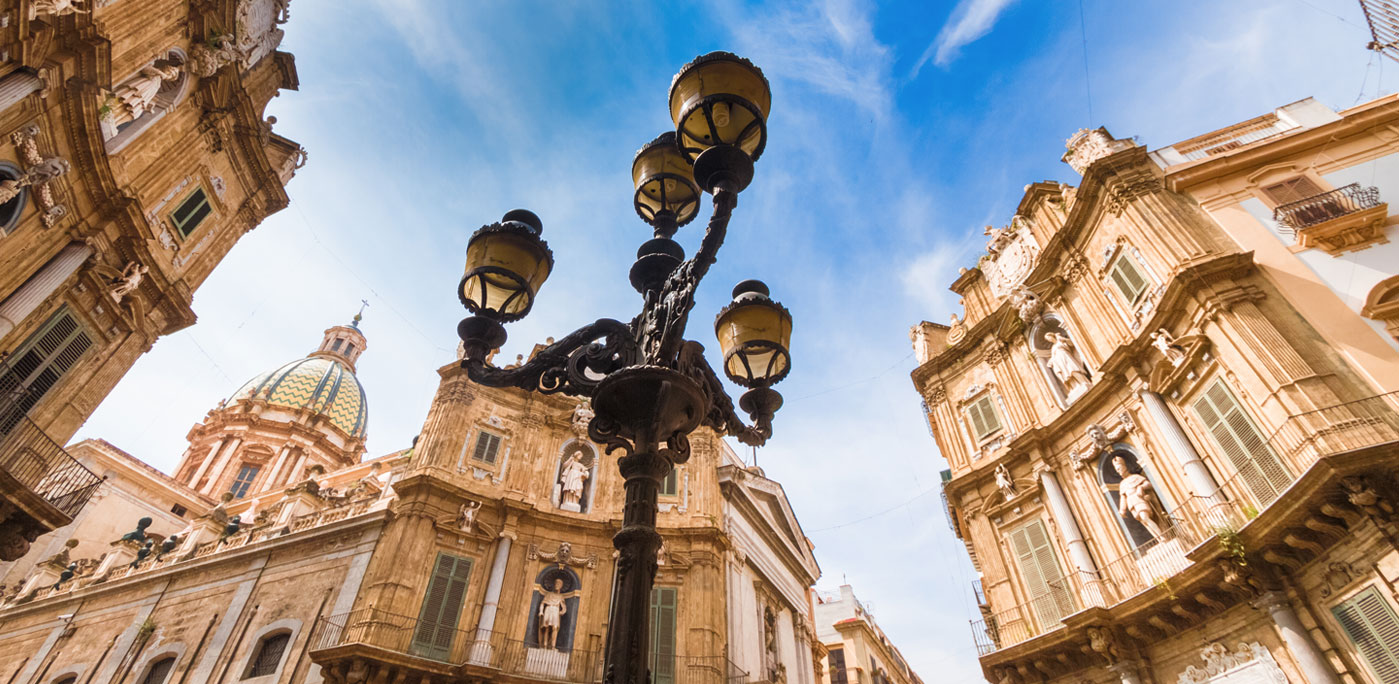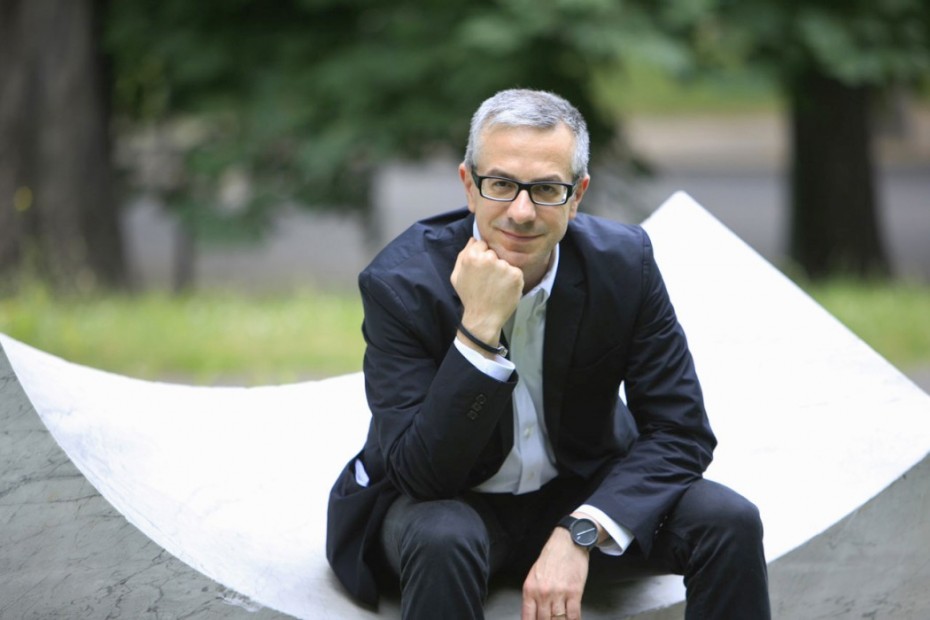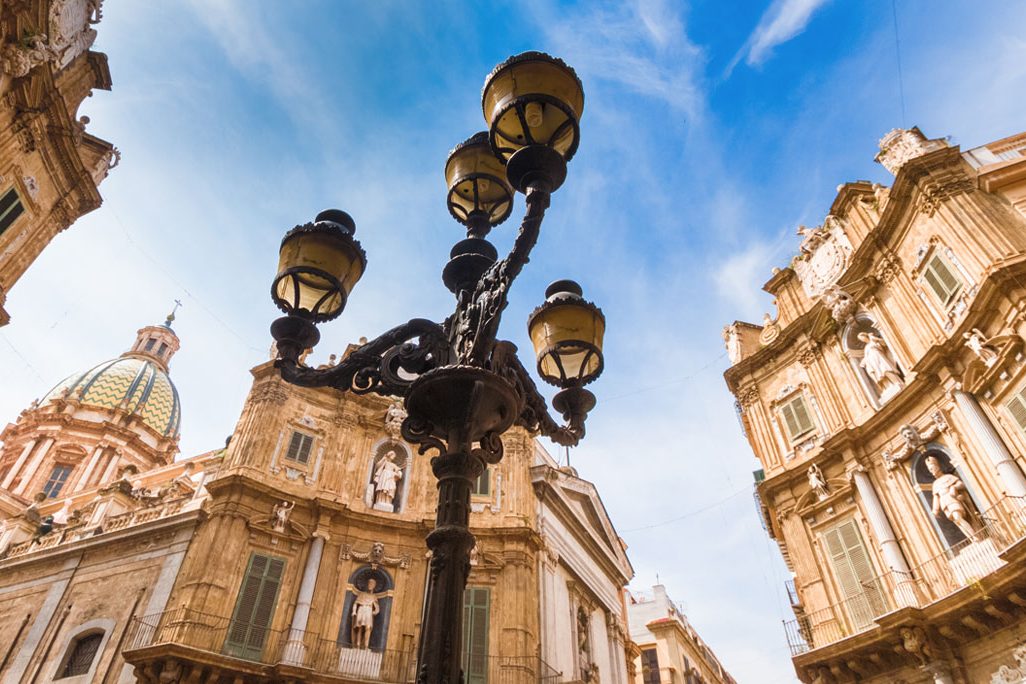Palermo, the cultural and economic gem of Sicily, is a 2,700 year old city but has still the flare of an international capital which, especially at the turn of the 20th century, was considered like the Paris of the Tyrrhenian Sea because of its rich history, architecture and gastronomy.
The city was founded by the Phoenicians in the 8th century B.C.
Palermo then became part of Carthage before being incorporated by the Roman Empire and eventually by the Byzantine Empire, for over a thousand years. The Greeks named the city Panormus meaning ‘complete port’. For almost three centuries (831 to 1072) it was under Arab rule when it first became a capital. The Arabs corrupted the Greek name into Balarm, the root for its present-day name. Palermo became capital of a new kingdom (from 1130 to 1816), following the Norman reconquest.
Eventually it would be united with the Kingdom of Naples to form the Two Sicilies until 1860, year which marked the Italian Unification. It is presently the capital of the region of Sicily, a region “ a statuto speciale” i.e. partly autonomous along with Sardinia, Val d’Aosta, Trentino-Alto Adige and Friuli-Venezia Giulia, and therefore with more priviliges than the other fifteen regions.
The Mediterranean weather welcomes you the moment you land at the International airport of Punta Raisi dedicated to Falcone and Borsellino, two emblematic judges who offered their lives to fight Mafia in Sicily and have turned since their death into 2 icons of civic hope for the whole of Italy.
Even in the heart of winter the almond trees in full pinkish white blossom and the mimosa trees in their amazing yellow attire cheer you up. The air is perfumed by its orange, grapefruit and lemon trees which seem to prosper not only in the unique botanic gardens designed by celebrated Sicilan architect Giovanni Battista Basilio, but also along side streets, in ancient Norman cloisters, practically everywhere, along with bushes of sage and rosemary in full bloom.
Sicily in winter is like Ireland in August, entirely green and covered with the most special mustard-colored wild flowers. Not only, the island is blessed by thermal natural spring waters just a few kilometers from the capital and easily reachable in the proximity of the majestic greek temple and theatre of Selinunte. In comparison to other important cities like Rome, Florence or Venice, Palermo is a little less touristy in the winter and this turns out to be an advantage.
What immediately strikes you is the richness of the Arab-Norman architecture which is quite prominent both in the Royal Palace and in the Cathedral of the nearby Monreale. The stupendous mosaics are silent testaments to another era, when the Norman ‘polyglot’ Kingdom of Sicily was the most prosperous country in Europe. The Palatine Chapel and the throne’s room are the most evocative of the splendour of that time.
The Cathedral of Monreale is the greatest example of Norman architecture and boasts the most exquisite mosaics illustrating the Old and New Testament as well as a cloister which is a caleidoscopic display of columns, one different from the other, a true marvel for the eyes and the soul. One cannot escape the richness of Romanesque, Gothic and Baroque churches, with their stratification of thousands of years.
Each building can be read like an open book revealing the most amazing history of contamination. The very center of the city, at the intersection of Corso Vittorio Emanuele and Via Maqueda, is the monumental octagonal Baroque Piazza Vigliena, commonly known as “I quattro Canti” leading on one side to the sea, on the other to the nearby mountains.
Its original lay-out goes back to 1609-16011 when architect Giulio Lasso conceived the so-called “Four Corners” including four buildings slighly concave, accomodating four fountains at ground level and three more levels of statues such as the Four Seasons as well as some of the patron saints of the city: Santa Cristina, Santa Ninfa, Santa Olivia and Santa Agata.
Roman Catholicism is highly important in Palermitan culture. The Patron Saint of Palermo par excellence is however Santa Rosalia. Her feast is on July 15 and is perhaps the biggest social event of the year because the saint is still venerated with great faith and love. Baroque churches are very prominent in Palermo along with their superdecorated altars in polycromous marbles. The most distinguished Baroque plasterer and sculptor of all times was Giacomo Serpotta from Palermo and his unique bold creations can be admired in all their complex iconography and symbols in the Oratories of Santa Cita and San Domenico.
According to Italian critic Giulio Argan he was “among the greatest sculptors of the eighteenth century Europe”. And rightly so; he was extremeley innovative and imaginative vis a vis the vernacular models of his contemporaries. He managed to create a joyful world in plaster, bursting with life, in which women, cherubs and children play a major role in presenting a new positive approach to art and faith. The oratories at that time were intimate spaces of assembly and cult, reserved for very special indoctrinated people.
Palermo played an important role also at the end of the nineteenth and beginning of the twentieth century when Wagner came for several months to compose Lohengrin at the Hotel des Palmes (1881-2) and architects such as Giovanni Battista Filippo Basile (1874-1880) and at his death, his son Ernesto (1891-97) designed “Teatro Massimo” in all its splendor. This theatre is the largest opera house in Italy and the third largest in Europe. It has become famous for the scene shot on the massive flight of stairs in Godfather Part 3 film.
Later on, in the early 1920s, Angiolo Mazzone designed the large rationalist building of the “Palazzo delle Poste”, typical of the Fascist period, while the interiors are art deco and futuristic, one of the few intact examples of the time, with rare paintaings and frescoes by Benedetta Cappa, wife of Marinetti, the founder of Italian Futurism. The four huge paintings on different aspects and means of Communication, were recently displayed at the Guggenheim Museum in New York as part of a memorable exhibition on Futurism.
There is one more building worth of note exemplifying twentieth century architecture and interior design, so far unmatched in Sicily for its intrinsinc value: the intervention of Carlo Scarpa at Palazzo Abatellis and the nearby University. Palazzo Abatellis is a Gothic-Catalan Palazzo designed in the 15th century by Matteo Carnelivari and hosts the regional gallery, home to numerous works of art considered among Italy’s best Renaissance paintings such as The Vergine Annunciata by Antonello da Messina (15th century) along with stupendous busts by Francesco Laurana (also 15th century) and the large fresco entitled The Triumph of Death (1445).
The unique innovative renovation by Carlo Scarpa of the Galleria Nazionale di Sicilia (1953) marked a turning point in the activity of the Venetian architect -one of the protagonists of 20th century architecture in Italy- and most of all, in museum design. He gave a brilliant lesson which is still valid for architects and curators all over the world.
Palermo is still among the top destinations both in Italy and Europe attracting significant numbers of tourists each year not only for its history, culture, architecture and art but also for a unique eno-gastronomic experience. The island of Sicily has been producing wine and excellent olive oil since before Homer or Caesar were born. Palermo is widely known for its three colourful fruit, vegetable and fish markets in the heart of Palermo, known as The Vucciria, as immortalized also by Sicilian painter Renato Guttuso.
They are located in the medieval part of town and offer the possibility of buying fresh and cooked veggies such as tasty boiled artichokes and delicious potatoes . Everywhere you can experience an extensive Sicilian culinary repertoire spanning from arancini (stuffed rice balls) to caponata (a Sicilian ratatouille with aubergines), from the local spleen sandwiches to superb icecreams made with different types of chocolate from Modica, according to ancient Aztec methods and recipes and pistachios from Bronte, unmatched in quality and taste.
Sicily, and Palermo in particoular, is a magic place worth discovering, very hospitable (bed and breakfast start from euro 35, breakfast included) and affordable. An enriching travelling experience to remember!






























